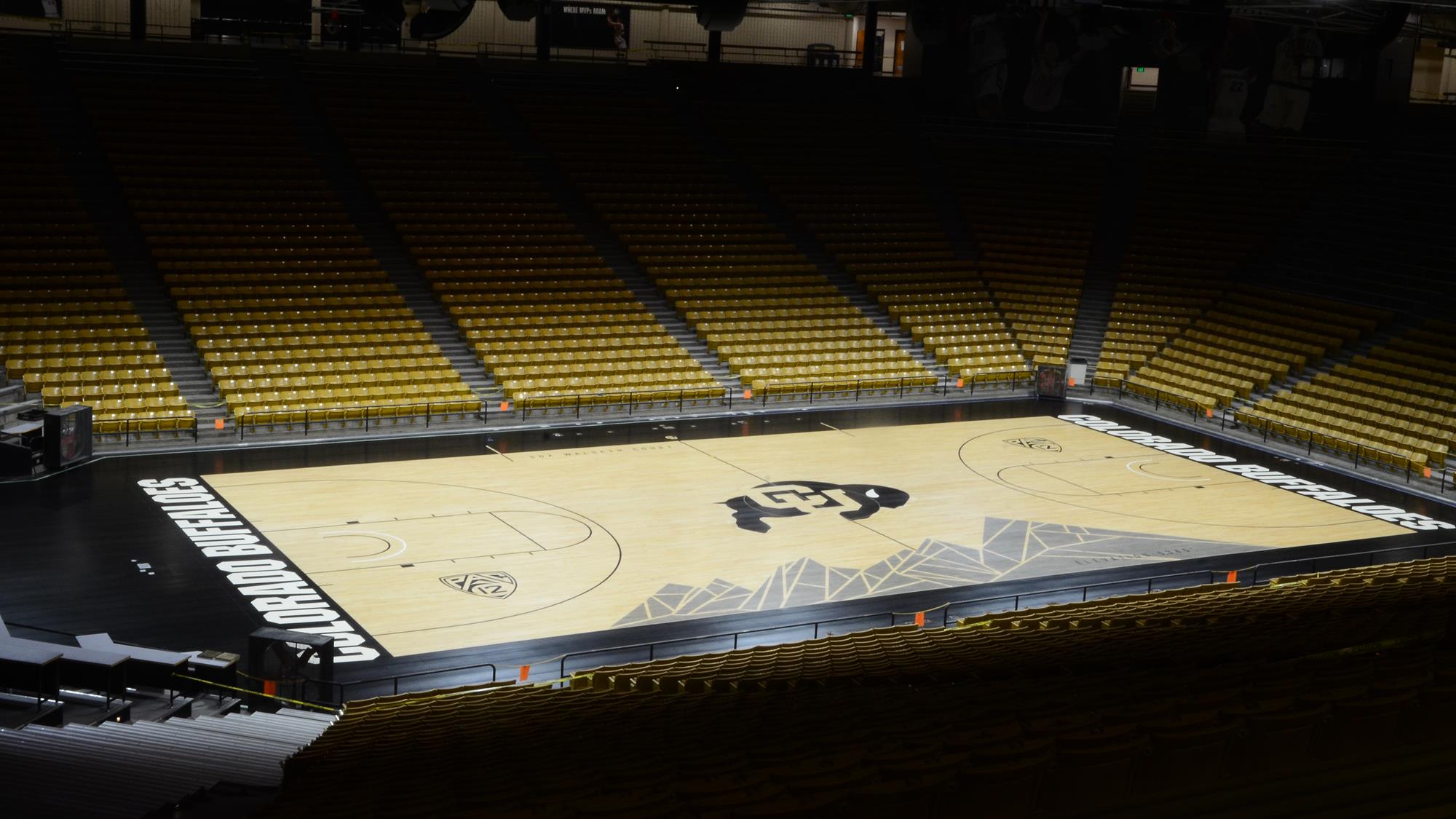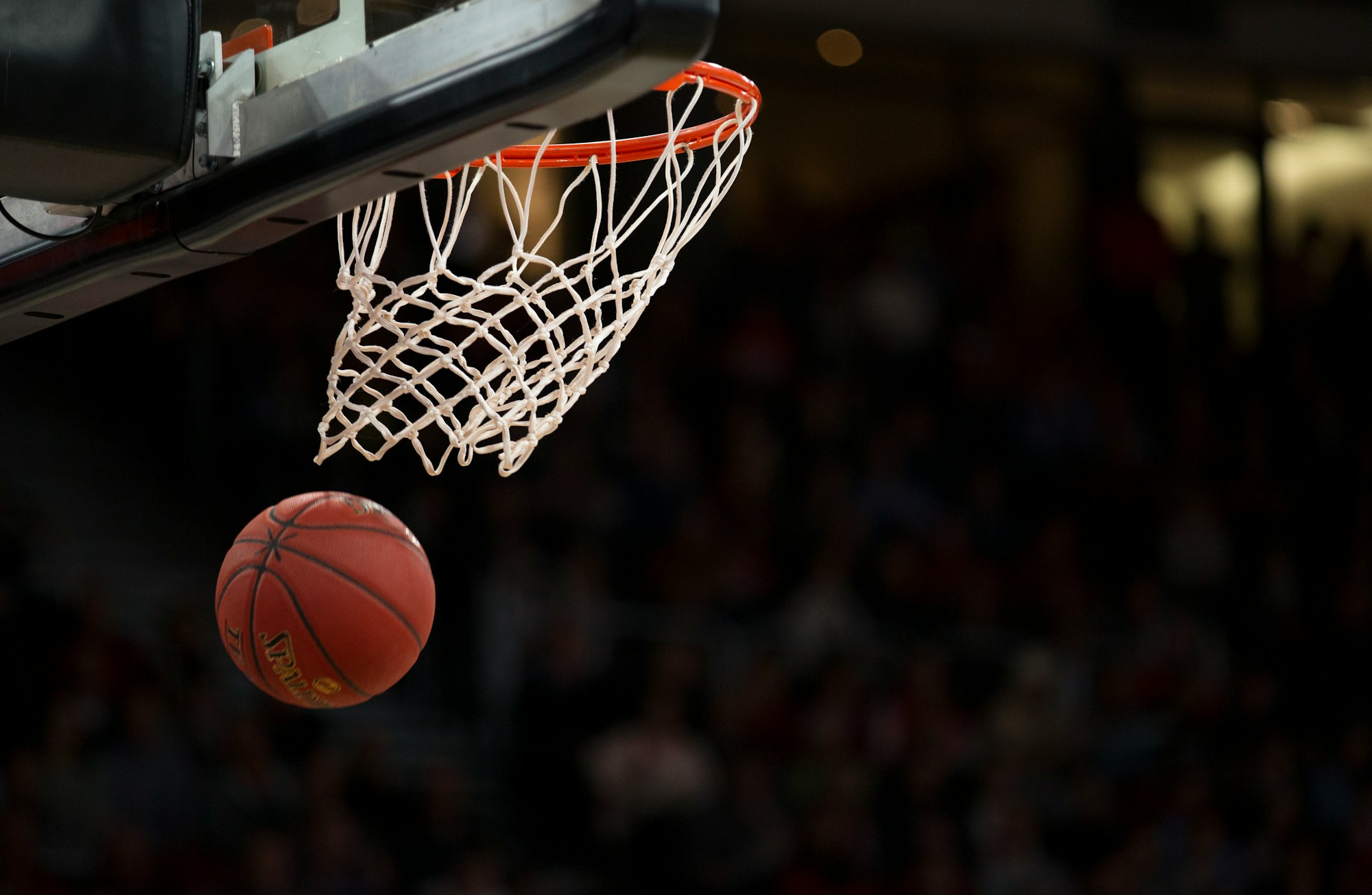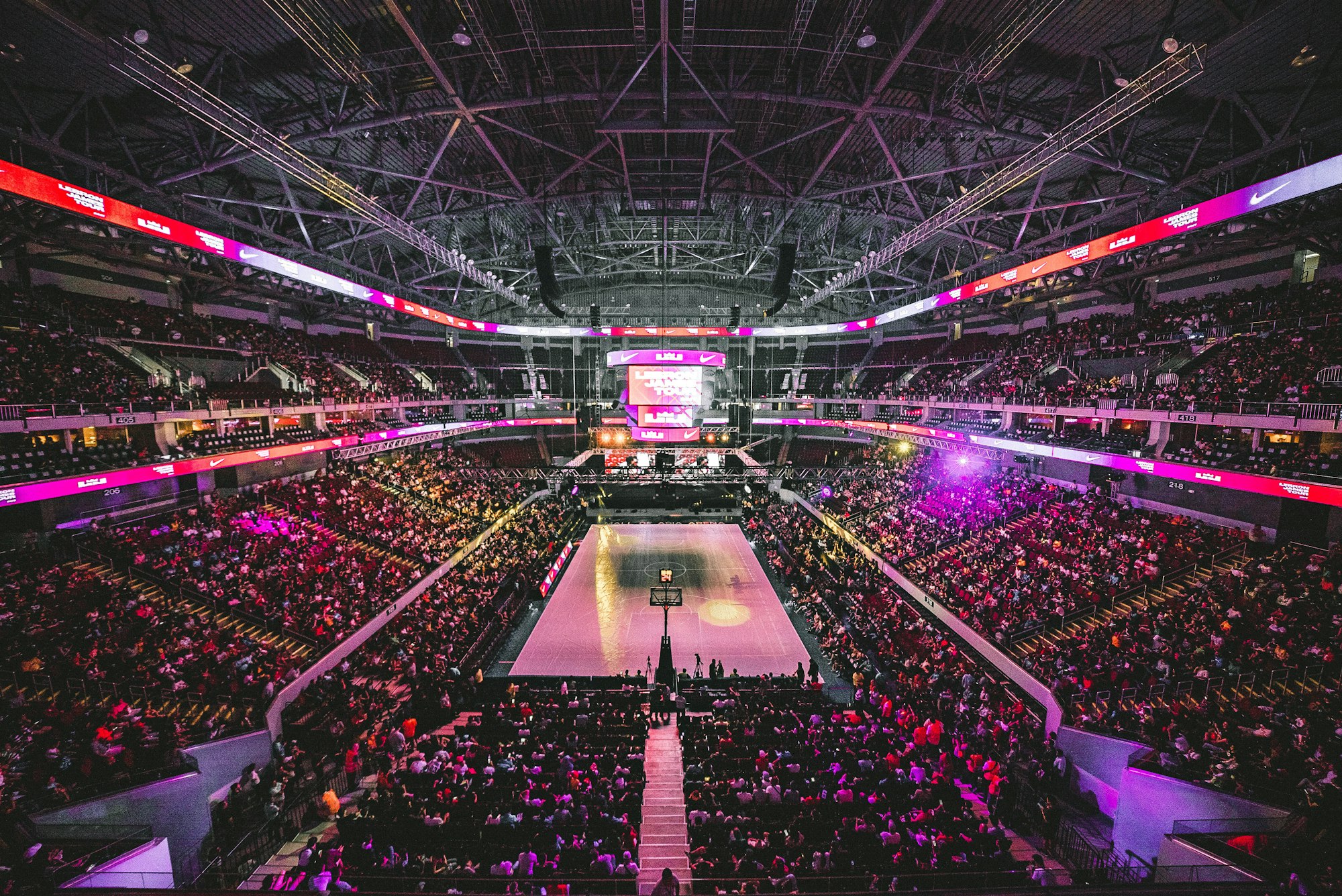Defining the Modern Era Collegiate Basketball
The game of basketball has fundamentally changed through increases in strength, speed, physicality, and endurance. This article highlights the many ways we train basketball athletes to adapt to the modern day era.

The sport of basketball has changed and evolved since its 1891 inception from James Naismith. Basketball is now more explosive, physical, faster, and more demanding on the human body than ever. The student-athletes that arrive at campus for their first year do so with a greater basketball intelligence and usually possess more basketball-specific skill sets from the years of early childhood specialization.
The New Era of Basketball Demands
To state that basketball is a different sport than the one created in Springfield, Massachusetts is an understatement. Understanding that the game is more physical, faster, and explosive; all combined with an uncanny level of technical-tactical skill sets, all means that the physical preparation for the sport is at an all-time high. No longer are the days of positional basketball, lackluster defensive bouts, and contactless fouls. Everyone is a shooter. Everyone can drive & penetrate. Everyone needs to be a defensive physical juggernaut.
Preparing a New Generation for Future Demands
We know the game is faster as told by the positional wearable technologies our student-athletes wear. We know that our student-athletes are ‘Bigger, Faster, Stronger’ by the weight room numbers we record in our history books. It may be debatable that the game is more physical but undeniably practices and training is more challenging and demanding. What are we to do? Do we hang our heads, succumb to the new demands of the sport, and toss in the towel? No! That does not reflect a ‘Mamba Mentality’! The first step is better to understand the demands of the game. The second step is ensuring we are exceeding those demands through our structured strength and conditioning program.
Understanding Change and Adopting Training Strategies
The game has fundamentally changed through increases in strength, speed, physicality, and endurance. Student-athletes are arriving at the college level with a heightened skill set specialized through youth basketball development. We have documented the student-athletes’ physiologically changes because of the sport and the subsequent training. Through the remainder of the article, we will share our tactics, techniques, and toolsets we utilize daily to ‘Engineer an Elite Athlete’.
Evaluation & Assessment

Selecting the Appropriate Strategy
Every Colorado Buffalo walking through the facility doors does so with a sense of urgency and understanding of the necessity to physically push their body to the limit. We expect and demand those training intensities as it elicits the unbreakable spirit and mentality we need our student-athletes to possess to perform at this level. As great as the sense of urgency is, how do we know where the limit is? How can we better understand what their rate-limiting factors to performance are?
Physical Assessment of Rate-Limiting Factors
While ‘all roads may lead to Rome’, we want to follow the most direct route. There is no purpose of haphazardly throwing things against the wall to see what sticks. Our philosophy has always been to be thorough with our program design, meticulous with the exercise selection, and ruthless with our execution. To accomplish all three, we must begin by understanding the underlying factors that contribute to why an athlete is a way they are. We must begin with fundamentally discover and embrace a journey of routinely answering “why”.
Diagnostic Discovery of Individuality
“Start with Why”. Why does an athlete move the way they do? Why do they perform the way they perform? Why does it hurt a specific athlete to squat one variation versus another? At the University of Colorado, we have been fortunate to have an abundance of resources that aids our ability to quantitatively measure what we qualitatively see.
Our student-athletes perform a thorough medical evaluation before participating in training activities. Afterward, our strength and conditioning staff will conduct more assessment tests that include physiological profiling, force analysis, strength testing, and movement screening. All of this testing is done to ensure that we are developing the right attributes, at the right time, for the right athlete.
While one athlete may be focusing on the development of their lower-body, revealed by their force plate analysis, Nordbord, or ForceFrame, another athlete may be focusing on their upper-body power development identified by their strength numbers or medicine ball distances.
Evaluation & Assessment Routine
A foundational belief we have of the weight room is that it is a means to an end. It is a collection of tools and specialized equipment that may be needed to engineer and build a modern-day basketball athlete. While all tools serve a function, the utilization of every tool in that toolbox may be unwarranted. We are thorough and diligent with the assessment process to better identify which tools are appropriate for the job.
Training & Preparation

The Importance of Training for the New Era of Basketball
Despite all the advances in the technologies and methods behind strength and conditioning, at the end of the day, we owe it to our student-athletes to push, motivate, and encourage them to become a greater version of themselves. Knowing that the game has advanced in speed, power, and physicality, it has become even more important to ensure we are properly prepared for the physical rigor and demands of the sport. We have placed a lot of importance in the assessment and evaluative process to better understand what each unique student-athletes need to develop, to fulfill their athletic potential – but make no mistake, we push our student-athletes to raise those standards daily.
Building the Modern Day Athlete
The tide is changing and student-athletes are arriving better prepared than the previous decade of student-athletes. During the early 2000s, student-athletes did not have the high school exposure to fundamental strength and conditioning programs like those that we are seeing today. College freshmen are now entering our program with a solid foundation that we can add to help increase their athletic potential.
The training process at the University of Colorado is unique. While we utilize a backside approach to technologies and scientific advancements, we combine it with a front-facing grind, toughness, and gym-culture attitude that is exciting, motivating, and fun to be around. Our student-athletes routinely are challenged to their wit ends. Every session, our student-athletes endure tough physically exerting that pushes them to physical adaption. Most importantly, our coaching staff goes out of their way to invest fully into each student-athlete, building deep relationships that allow them to tap into different motivational tactics for each student-athlete.
Enhancing Strength & Power Qualities
At the University of Colorado, we utilize a mixed modality approach to developing explosive power in our basketball student-athletes. We employ Olympic lifts, plyometrics, traditional ground-based strength exercises, sled drills, hill runs, stadium bounds, and a bag of other well-researched modalities. We believe that strength and conditioning are not a “one-size-fits-all” approach and we must find applicable solutions for every athlete. The use of technologies like “bar tracking sensors” that measure the velocities of bar movement, i.e. velocity based training, has been a source of external feedback for our student-athletes to ensure that every repetition is done explosively with maximal efforts.
Unbreakable Conditioning for Championship Level Basketball

Recognizing that student-athletes have improved nearly every facet of their athletic performance potential, it goes without saying that the modern era of basketball also requires higher levels of sustained efforts. It’s not effective to be able to play three or four possessions before going sub-maximal on the next. The game begets maximal attention, effort, and intensities; and it’s ever more important to ensure we’re properly developing their energy systems to accomplish sustained high-intensity basketball.
We utilize several novel approaches when it comes to developing the fuel-tank for sustained basketball efforts. One of the very best strategies to “get into shape” for basketball is to never allow our student-athletes to get “out of shape”. Fortunately, NCAA regulations around countable athletic-related activities (CARA) allows for our sports coaches to work with our student-athletes upwards to four-hours out of competition season. What this means for us developmental coaches is that our basketball student-athletes are constantly playing basketball, honing their skillsets, and never leaving the basketball courts. The remaining out of competition hours we dedicate towards their strength, power, and hypertrophy gains that are needed to elevate their game.
Despite the reallocation of hours per the NCAA, there are times where we need to enhance the fuel-tank of our student-athletes and work on developing their energy system capacities. We are fortunate to have an abundance of resources here including AlterG treadmills, HydroWorx underwater treadmills, and several low-impact modalities like ski-ergs, versa climbers, spin-bikes, and assault bikes, to name a few. Throughout the preparatory phases of development, we’ll utilize these resources to focus on different areas of energy system development like cardiac output work, high-intensity continuous training, tempo intervals, and high-resistance intervals.
Developing the Modern Day Basketball Student-Athlete
While there are similarities and generalizations of the class of student-athletes coming into our program, not every single athlete will need the same focus of development. Some of our freshmen need to gain lean muscle mass to execute their positional demands. Other freshmen needed to become more agile and explosive to be able to penetrate the defensive with their speed. Another student-athlete may need to focus on their sustained conditioning to be able to log effective minutes throughout a game.
As we have stated before, our approach is not a “cookie-cutter” approach to strength & conditioning. We properly evaluate and assess the needs of our student-athletes and then ruthlessly prescribe the appropriate solution to enhance their performance. We focus on the areas of developing each athlete's needs while fostering an environment in which our student-athletes love to train. We relate, connect, bond, and share with our student-athletes to create an unbreakable relationship aligned by shared values and a vision for winning championships.
Recovery & Regeneration

Rest Does Not Equal Recovery
We have outlined the steps that we use to go from A-Z in their physical development as a modern-day basketball athlete. We have drawn a line from the identification of rate-limiting performance attributes that both positively and negatively affect their on-court performance. We have then discussed how, once identified, we appropriately train those attributes to turn weaknesses into strengths. We share our methods on strength and power training to aid in our athlete’s ability to defend, be physical, and assert their will over their opponent. We provide insights into how we fine-tune the ‘engine’ of our student-athletes through smart, strategic, energy-system development to provide them the biggest ‘fuel tank’ for them to draw upon when the ball goes up for the tip.
Throughout this module, we will highlight the specific steps we take to ensure that our student-athletes are always primed and ready to go. We will share what we do to specifically help our student-athletes recover from one athletic bout and prepare for the next. It is our motto that the cool-down is the warm-up for tomorrow’s training. While it is true, Formula 1 race-cars can do incredible things on the racetrack. What goes unnoticed to many is the hundreds of hours their mechanics spend ensuring every aspect of those specialized machines are tuned, optimized, and ready for the next race.
Identifying the Appropriate Solution for Recovery

It is an all too familiar sight—the day after a game as student-athletes enter the training facility with an ever-evident stiffness obvious from a mile away. You might first notice the rigidity of their walking gait, the gaunt faces from the previous night’s poor sleep, or their central nervous system fatigue since the most recent game. One thing is certainly evident: you do not need dual-force plates or markerless biomechanical screening technologies to determine that their bodies are worn-down, fatigued, and depleted from the previous night’s competition.
This is a performance-world reality. However, it does not need to replay itself week-to-week like a broken record. Rather than picking up the shattered pieces every first day back, what if there were a better paradigm within which we could operate? What if we could construct a proactive approach to reducing these undesirable performance outcomes rather than simply reacting to each unique athlete variable as it comes?
To expedite our prescriptive program design, we create a clear blueprint that maps out specific recovery modalities depending on the external outputs our student-athletes produce. If one of our student-athletes performed a higher than normal amount of high-velocity decelerations, we distinguish differences between the utilization of one recovery strategy than the athlete who may exceed their total distance norms. All of our recovery processes are individually mapped to the specific demands the student-athletes face.
Also, we create a hierarchy of recovery modalities that each one of our student-athletes must funnel through as they progress through their recovery plan. We begin with the simplest solution and allow our student-athletes to progress to more advanced modalities of recovery once they exhaust the simple. If it is low-hanging fruit, we do not attempt to climb the tallest tree for the most exotic fruit.
Regeneration is Not One-Size Fits All
We want to remove the likelihood of negative body effects associated with the high-demands of basketball. To get a glimpse of those demands, we examine the physical attributes and conditions that lead to it, i.e. the high-velocity accelerations, decelerations, minutes-played, PlayerLoad, or any other physical external outputs. This is what we call reverse-engineering the game through the usage of wearable technology and positional-data. This athlete-specific data fuels our understanding of the complete demands of the sport.
After we understand the workload associated demands i.e. the physical outputs (and the subsequent physiological responses) we pre-prescribe a few recommended recovery strategies that can be incredibly helpful. To systemize this process, we mentally automate this process through appropriate “If This, Then That” (IFTTT) decisions. IF we notice THIS specific workload marker, THEN we do THAT specific recovery strategy. I have found creating laminated “recovery sheets” extremely practical and routinely hand the cards out to student-athletes based on their individual needs.
Another real-world strategy might be listing several recommendations for common best practices in nutritional/supplementation interventions, low-intensity recovery rides/runs, usage of compression garments, practitioner-led massage work, the use of soft-tissue devices and instrumentation, cold-water immersion, temperature contrast methods, photobiomodulation therapies (PBMT), sensory-deprivation float tanks, and/or meditation, etc.
Applying the Right Recovery Strategies for Performance
If you want to know where to go, look to where you began. If you are attempting to use wearable technology to assist the identification and prescription of recovery modalities, begin with benchmarking the typical normative values of each game, practice, and drill. You do not need advanced degrees, years of computer science experience, or the latest statistical software to understand that large deviations from mean values will affect how student-athletes feel and respond to training.
Supporting Championship Caliber Basketball Performance

Understanding the Needs of Modern Day Basketball
Throughout this article are examples regarding how the modern-day game of basketball has changed. Student-athletes are more explosive than ever. The game is played faster and at higher levels of physicality for longer. All of these increases in the game require a greater need for physical development to keep our student-athletes safe and healthy, but equally important, performing at their peak potential.
The Importance of Proper Evaluations & Assessments
We utilize a wide-abundance of technologies that allow us to properly evaluate and assess our student-athletes. We equip student-athletes with wearable technologies, utilize force platforms, biomechanical motion capture and a wide degree of more resources. All of these incredible resources allow us to better understand what the rate-limiting factors to performance are while providing us a blueprint we must follow to better develop their performance potential.
Strategies for Training & Preparation for Championship Basketball
Assessing student-athletes is only part of the equation. It is one thing to possess the blueprints of a building, it is entirely a different action to construct it. We have incredible coaches surrounding the program that allows us to utilize different training tactics. Our student-athletes push, pull, hinge, squat, and carry weights. Our student-athletes sprint, jump, throw medicine balls and perform a battery of specialized exercises to develop their basketball athleticism.
We use the weight room to not only build muscles and conditioning but equally important, an unbreakable competitive edge. We demand toughness. We expect hard work. We hold them accountable for our high standards of excellence. In our weight room, they sharpen their competitive spirits – all while having a motivating and encouraging environment they train within.
Appropriate Recovery & Regeneration Strategies
While we focus on developing our student-athletes, we also make sure their balance between stress and rest is equal. We are mindful of the workloads are student-athletes are performing and we systematically ensure that we are providing opportunities for our student-athletes to take care of their bodies and get the treatments they need. Like any high-performing machine, every engine needs a tune-up from time to time. We are deliberate with our recovery strategies to ensure our student-athletes are arriving at every training session, ready to give their best efforts.
Supporting the Modern Day Basketball Program
Throughout this article, we discussed how we go from evaluation to training, to recovery. We discuss the needs of the modern-day basketball athlete and the deliberate steps and processes we undertake at the University of Colorado to ensure our team has success. The game requires an increased level of physical preparation and we are determined to push our student-athletes for them to reach their physical performance potential. In Boulder, toughness is a requirement and not an option. True to our motto; “the Pride and Tradition of the Colorado Buffaloes will not be entrusted to the timid or the weak.”
There will be no weakness.
